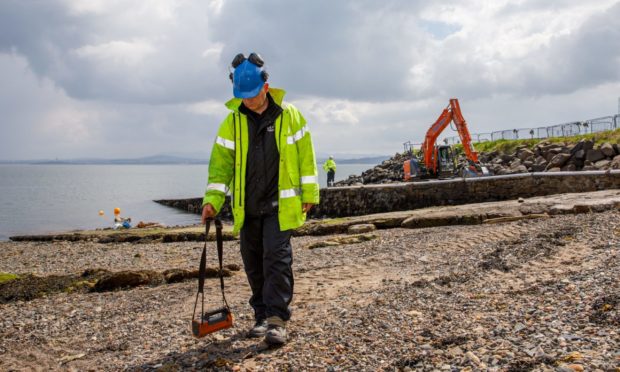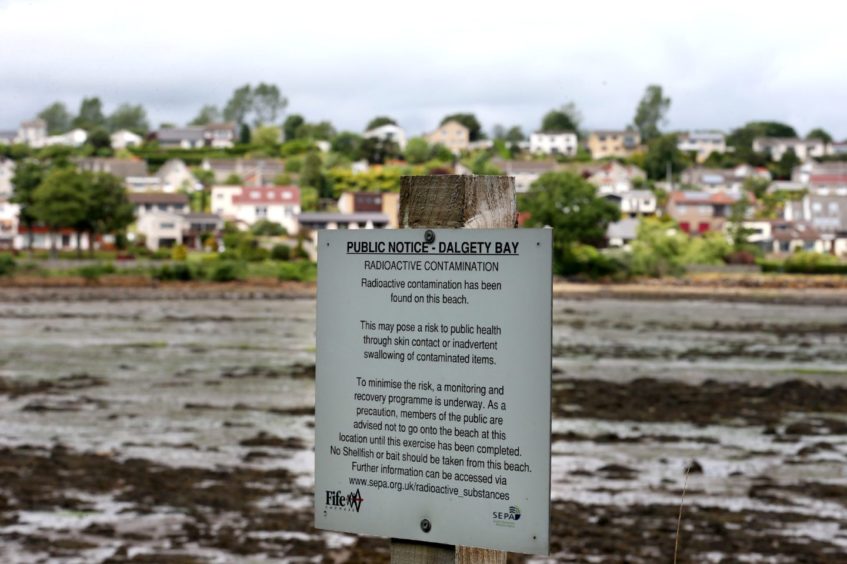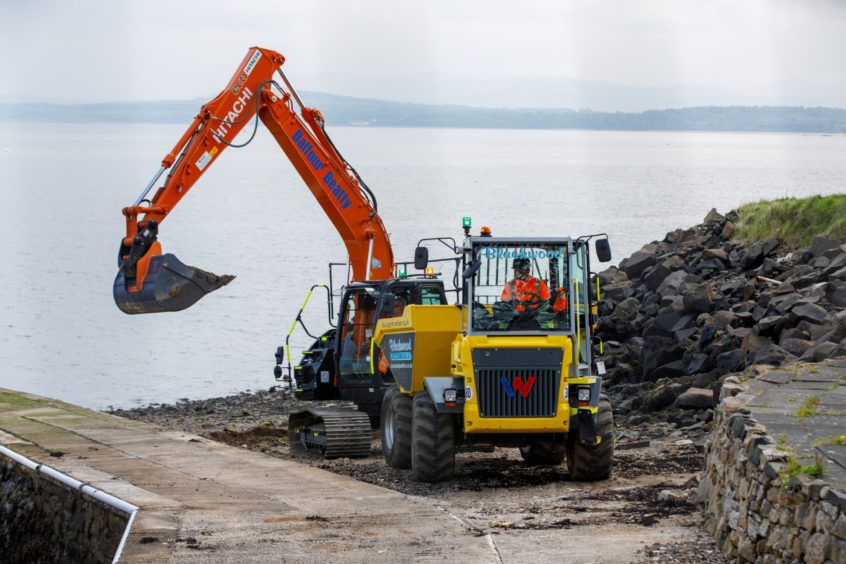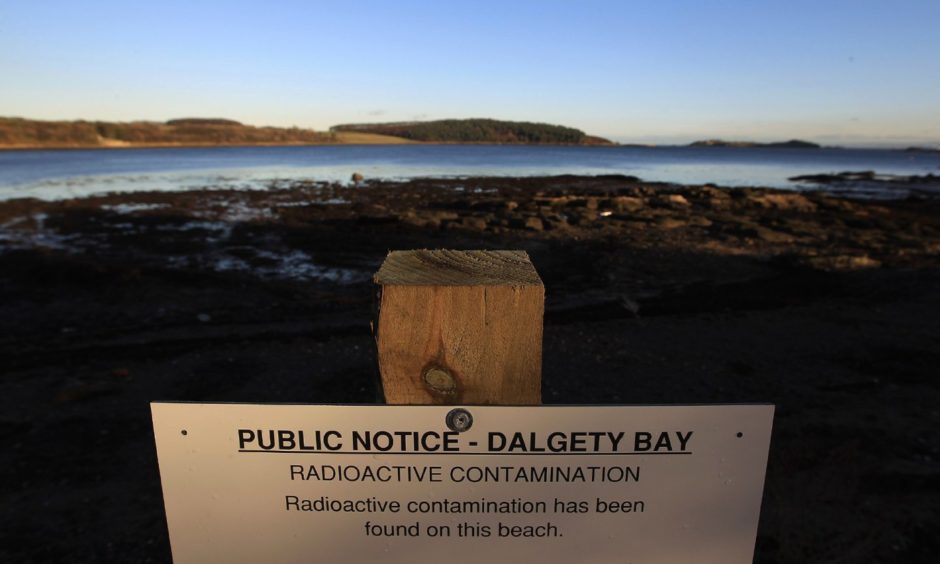Dalgety Bay beach has more radioactive particles on it than any other site in Scotland.
The Scottish Environment Protection Agency (Sepa) said it had reviewed similar areas in the wake of the problems discovered in Fife.
While officials discovered radiation in some places, there was nothing of the magnitude found at Dalgety Bay.
Radioactive particles were first found at the shore near Dalgety Bay sailing club more than 30 years ago.
The hazardous substance was used in paint to make aircraft dials luminous.
The residue from nearby HMS Donibristle was burned and buried on the beach sometime before 1959.
And after years of wrangling, the Ministry of Defence was named as the polluter in 2013.
Other sites affected
Now, as $10.5 million of work to clear the radiation is finally under way, Sepa confirmed it had also carried out studies at other sites in Scotland where radium was used.
Dr Paul Dale, Sepa’s radioactive substance manager, said: “The activities undertaken at Dalgety Bay and the sites near HMS Donibristle could have occurred at other sites.
“What we’ve done since understanding the magnitude of the issue at Dalgety Bay is undertake a review of similar sites around Scotland where industries used radium at that time.
“We have investigated a number of sites and fortunately for those other communities, those sites haven’t indicated anything like the magnitude of the problem at Dalgety Bay.”
Dr Dale said that while radium exists elsewhere, it does not pose the same risks as that posed on the Fife beach, which has been closed to the public since 2011.
“As long as nobody comes in contact with that and there’s no pathway through the sites, there’s no risk,” he said.
Sepa has not published a list of the affected sites for fear of causing “undue public concern”.
Work to clear beach ongoing
Meanwhile, the work at Dalgety Bay is continuing and is on course to be complete by next year.
“There are no issues with being able to remove all restrictions once that’s complete,” Dr Dale said.
Contractors began last month and will initially be on site until October.
There will then be a six-month break until April to allow protection for wintering birds.
Specialist officers from Sepa are on site every day to ensure public health is protected.
Dr Dale said previously: “Communities around Dalgety Bay have for many years lived with the environmental legacy of Second World War radium contamination on the shore.
“Sepa has been clear in our requirements that remediation will be done once, and it will be done right – providing a permanent and positive resolution.”
Sepa will continue to monitor the area even once the work is finished.



